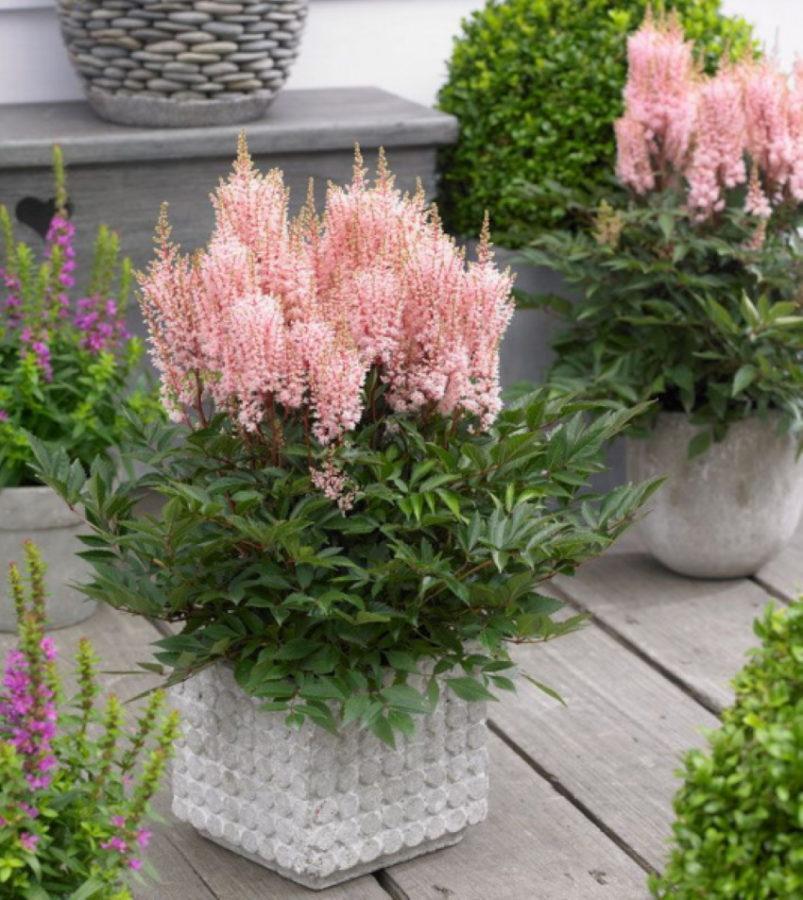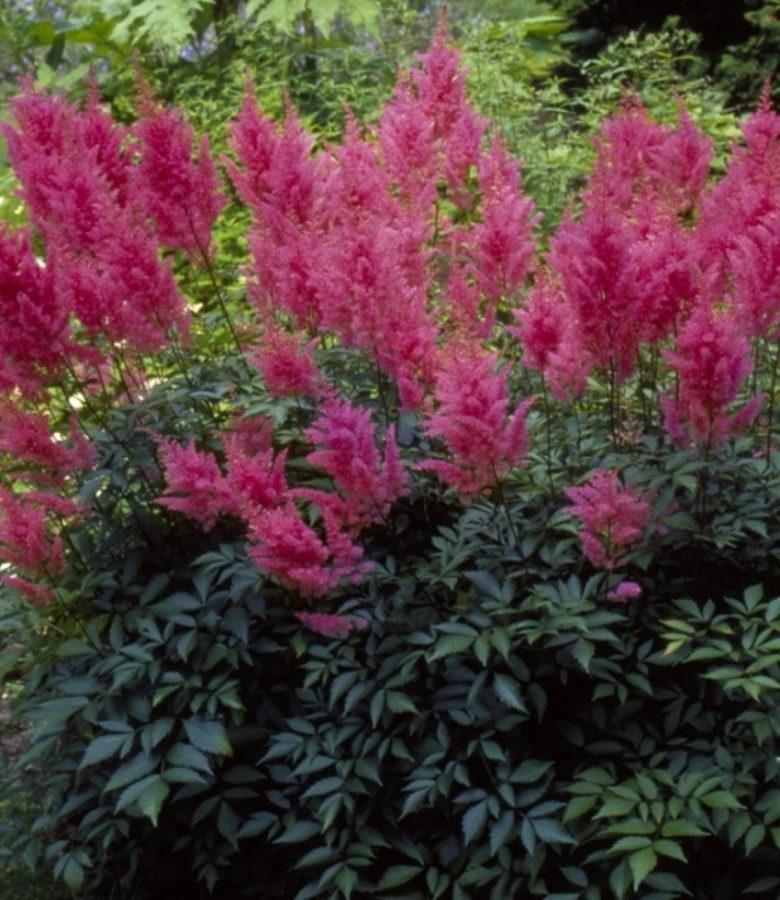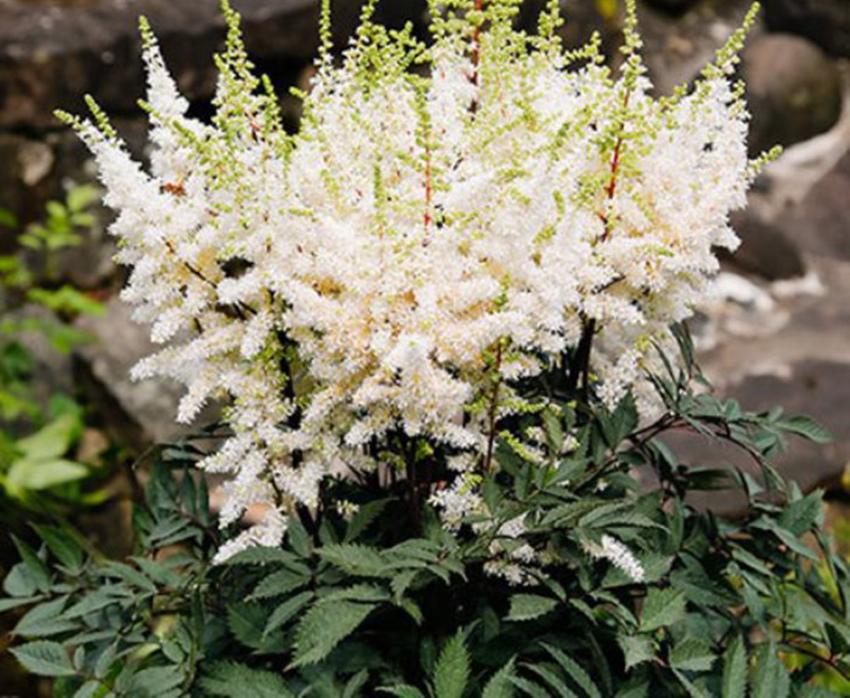Cultivation of Japanese astilba - a compact and frost-resistant perennial
 If you love blooming compact perennials, but do not have time to deal with them, then master the cultivation of Japanese Astilba. All she needs is the right planting site and regular watering. Once a week, looking at a flower bed with a watering can, by the end of summer you can get lush bushes. Dense panicles of inflorescences against the background of openwork foliage will be a reward for work.
If you love blooming compact perennials, but do not have time to deal with them, then master the cultivation of Japanese Astilba. All she needs is the right planting site and regular watering. Once a week, looking at a flower bed with a watering can, by the end of summer you can get lush bushes. Dense panicles of inflorescences against the background of openwork foliage will be a reward for work.
Distinctive features of the species
Perhaps one of the most important differences between the Japanese astilba is its height. This variety is represented by low-growing plants, an average of about 50 cm in height. Even the largest variety does not exceed 80 cm, and this is taking into account the peduncles, but there are also very crumbs up to 30 cm in height. The length of the panicles sometimes makes up half the total height of the bush. Most often they are diamond-shaped, from 15 to 30 cm long, but always very dense due to the many small flowers.
Some varieties bloom in early summer, others only with the arrival of August. The color of the inflorescences also depends on the varietal affiliation, but mostly these are delicate white-pink tones, although there are also dark-red hybrids.
The structure of the leaf plate of the Japanese astilba does not differ from its other varieties. It is the same openwork, cut into lobes with jagged edges. But the color of the leaves can be different. Some varieties in the spring will delight you with reddish leaves, which turn green only by autumn. It has retained its appearance and high frost resistance, which makes it possible to grow flowers in regions with a cold climate.
Growing Japanese Astilba
 Caring for a plant is no different from growing other perennial species and includes:
Caring for a plant is no different from growing other perennial species and includes:
- regular watering, since all astilbe loves moisture;
- periodic top dressing on poor soil (in fertile land, bushes can grow for some time without them);
- annual sprinkling of earth on overgrown roots;
- trimming the aerial part in the fall and mulching.
But the landing of the Japanese astilba has its own nuances, however, mostly positive. She feels great in shady places, moreover, she prefers them. In the sun, the inflorescences quickly fade, and the flowering time is slightly reduced. Another feature is weakly acidic soil, so every spring it is advisable to add a little dolomite flour... But you can plant bushes not only in spring. Such astilbe are able to take root even in blooming.